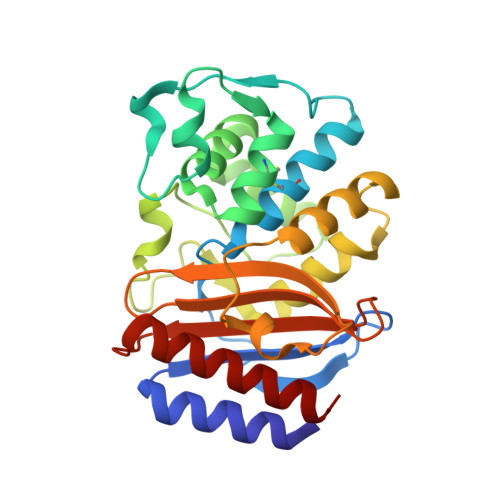Molecular structure of the acyl-enzyme intermediate in beta-lactam hydrolysis at 1.7 A resolution.
Strynadka, N.C., Adachi, H., Jensen, S.E., Johns, K., Sielecki, A., Betzel, C., Sutoh, K., James, M.N.(1992) Nature 359: 700-705
- PubMed: 1436034
- DOI: https://doi.org/10.1038/359700a0
- Primary Citation of Related Structures:
1FQG - PubMed Abstract:
The X-ray crystal structure of the molecular complex of penicillin G with a deacylation-defective mutant of the RTEM-1 beta-lactamase from Escherichia coli shows how these antibiotics are recognized and destroyed. Penicillin G is covalently bound to Ser 70 0 gamma as an acyl-enzyme intermediate. The deduced catalytic mechanism uses Ser 70 0 gamma as the attacking nucleophile during acylation. Lys 73 N zeta acts as a general base in abstracting a proton from Ser 70 and transferring it to the thiazolidine ring nitrogen atom via Ser 130 0 gamma. Deacylation is accomplished by nucleophilic attack on the penicilloyl carbonyl carbon by a water molecule assisted by the general base, Glu 166.
- Department of Biochemistry, University of Alberta, Edmonton, Canada.
Organizational Affiliation:

















